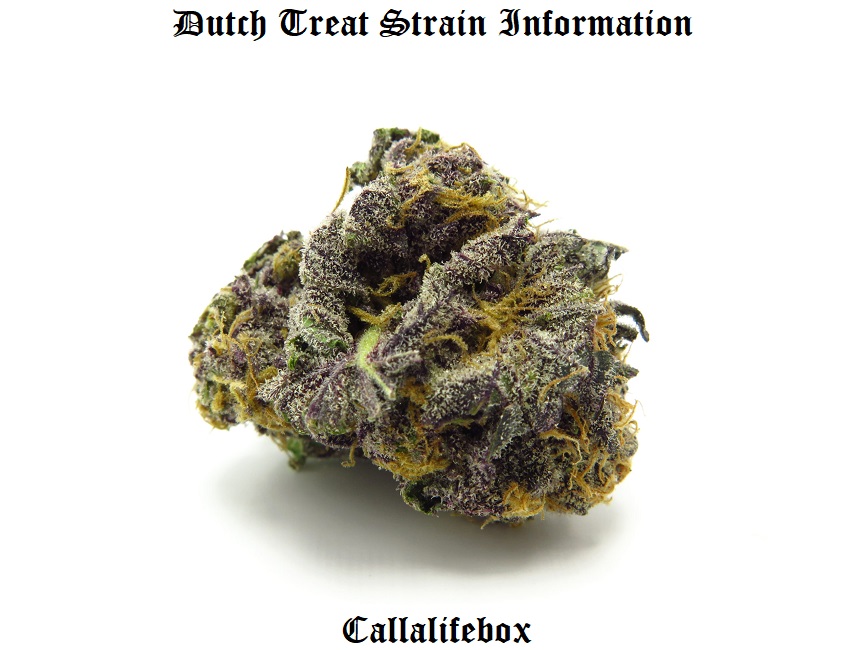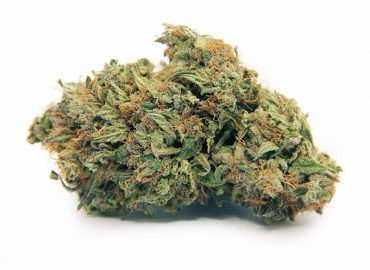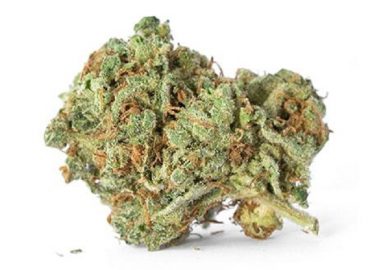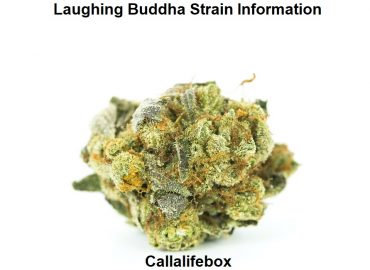Dutch Treat is a hybrid marijuana strain made by crossing Northern Lights with Haze. This strain produces cerebral effects that will leave you feeling uplifted and euphoric while reducing stress and relaxing the mind. Dutch Treat features a flavor profile that smells like sweet fruits mixed with pine and eucalyptus trees. Growers say this strain has dense, sticky buds that are pungent. Medical marijuana patients choose Dutch Treat to help relieve symptoms associated with fatigue, pain, and PMS. This strain originates from Amsterdam and is a cultural staple among the coffee shops there.
Dutch Treat cannabis strain is a 80/20 Indica dominant hybrid. This bud is very popular in Amsterdam coffee shops. This marijuana strain gets crossed either with Haze or Northern Lights. This makes some variations of Dutch Treat either Indica or Sativa dominant. The Dutch Treat aroma is sweet and fruity, mixed with earthy -pine tones. Good for daytime and evening medicinal and recreational use.
About Dutch Treat
“Dutch treat” — the common practice of splitting a bill after a date — isn’t nearly as fun as the cannabis strain of the same name. Dutch Treat (also known as Dutch Crunch) is an indica-heavy hybrid that was originally cultivated in the Pacific Northwest but is now very popular in Amsterdam. With minimal CBD around 1% and THC between 15% and 30%, this is a potent strain that offers some physical benefits alongside its psychoactivity. A good option for nighttime socializing or introspection, Dutch Treat’s potency earned it 3rd Best Sativa in the 2012 Southern California Cannabis Cup.
There is no clear provenance on the lineage of Dutch Treat. However, many sources point to Jordan of the Islands, an experienced breeder from Vancouver Island, as the point of origin. Jordan of the Islands grows several staple strains as well as innovative crossbreeds that retail at dispensaries throughout the Vancouver area.
Popular staple strains Northern Lights (another heavy indica with an earthy flavor profile) and Haze (a bold sativa with similarly wispy buds) have been suggested as parents of Dutch Treat, but without advanced genetic testing, we can’t know for sure how Dutch Treat came to be.

Despite its mysterious genetics, Dutch Treat has a clear “bag appeal’ that has made it attractive for innovative crossbreeding. One phenotype of the strain, Dutch Treat #5, has been used to create several other popular strains: combined with a Hawaiian sativa landrace, it’s yielded High Definition; combined with Super Silver Haze, it has produced Dutch Treat Haze; and when crossed with Electric Haze, it’s given us Electric Treat.
Despite its indica dominance, Dutch Treats’ buds are more sativa in appearance: they’re tapered and conical rather than round, and their leaves are more wispy and soft than densely packed. The leaves themselves are a dark green with golden and yellow pistils underneath a thick coating of trichomes. Because of their high resin content and loose bud structure, buds of Dutch Treat may prove difficult to break apart for a pipe or a joint if you’re not using a grinder. The aroma of this strain, while pleasant, isn’t particularly memorable or pungent. Cured buds have a muted woodsy smell of cedar and pine accented by some nonspecific citrus sweetness. The smoke is surprisingly smooth and has the taste of herbs and more pine.
For consumers who would rather not handle implements like joints, pipes, or vaporizers, cannabis company Bhang produces a packaged vape pen loaded with 25% THC Dutch Treat concentrate oil; even when vaped, this strain retains its distinctly herbal and earthy taste and smell.
This strain hits the user quickly, with a euphoric head rush. Rather than cerebral stimulation, Dutch Treat brings emotional uplift that lends itself to sociability and some talkativeness. The head high soon gives way to a wash of physical relaxation. Those same initial cerebral effects might skew towards laziness or sleepiness as the high progresses. Users may experience some lethargy and, with higher doses, intractable couchlock. Aside from Dutch Treat’s ability to ease tension, the strain’s small amounts of CBD have been said to provide relief from chronic pain, nausea, and insomnia, as well as from mental afflictions like anxiety, PTSD, and attention deficit disorders. Common negative side effects include red, dry eyes and persistent dry mouth. Dutch Treat’s slowly creeping body high makes it better suited to nighttime use. Consuming a small amount will go a long way — users have described the high as lasting up to two hours, pending individual tolerance.
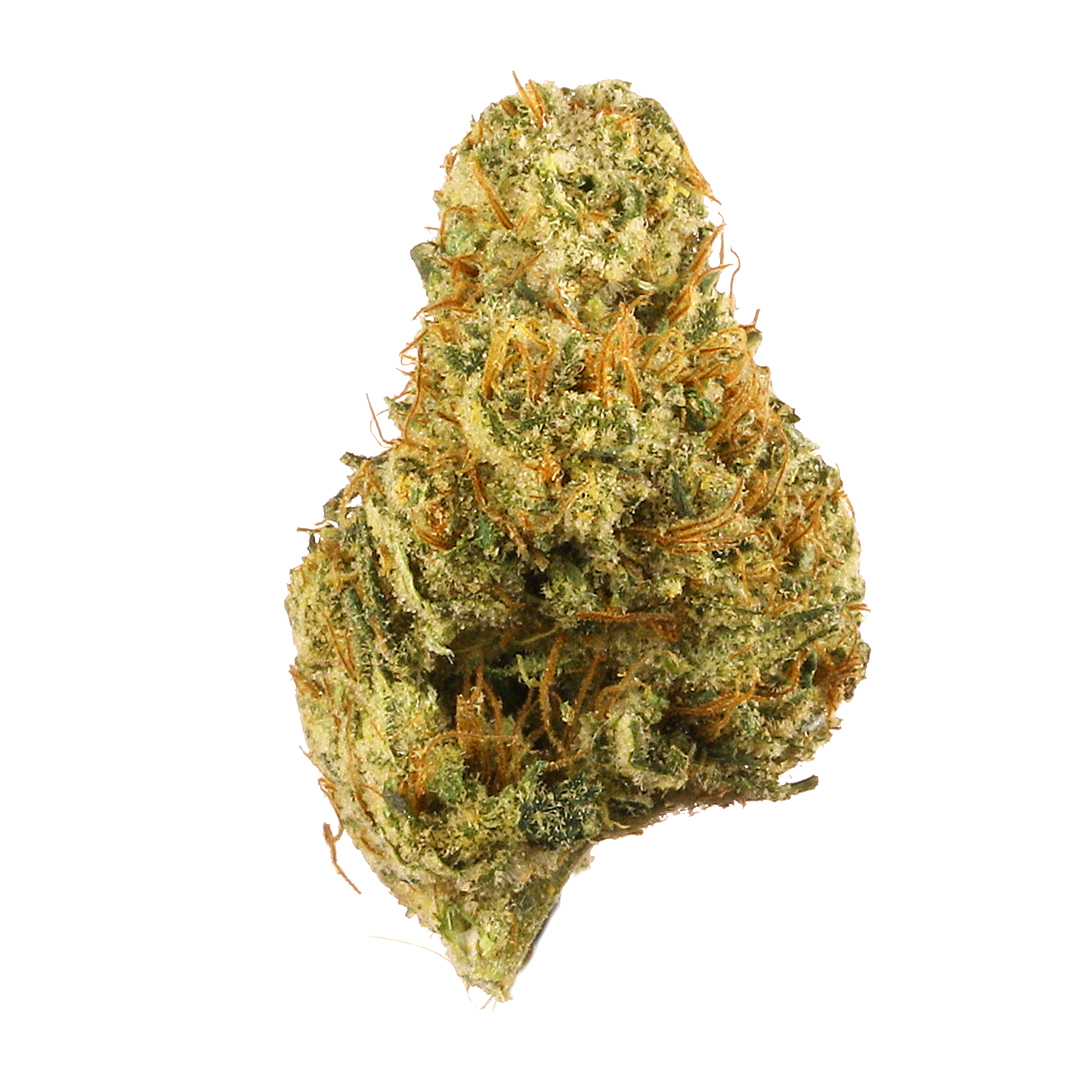
When grown indoors, Dutch Treat can be controlled through trimming and topping of fan leaves to remain relatively bushy, reaching heights of up to 5 feet. If grown outside in a warm, temperate climate, though, Dutch Treat can climb much higher; as plants shoot up, growers may need to use stakes to keep branches standing upright before they begin to flower. If growing outdoors, cultivators should plan on keeping plants in a climate that doesn’t waver beyond the ideal range of 72 to 80 degrees Fahrenheit. Dutch Treat has a higher than average yield: if grown successfully under ideal conditions, each plant can yield between 4 and 8 ounces of flower. Dutch Treat flowers within 6 to 8 weeks when cultivated indoors and as early as late September when grown outdoors.
Dutch Treat is a good strain for relaxing, but not necessarily for being productive or socializing — its indica leanings qualify this as an evening to nighttime strain. Dutch Treat’s CBD content also makes it beneficial for medicating conditions involving chronic pain and digestion. Because of its tendency to grow tall if not properly managed, plants of this strain may prove difficult to cultivate for a novice grower.
Dutch Treat Strain Effects
Dutch Treat provides a very relaxing high. Great for a Saturday at home, or for a night of movies and popcorn. The onset of the Dutch Treat high will be cerebral with a slight boost in energy. This will be quickly followed by sedation and even couch-lock; Making this strain better suited for more casual social settings. Dutch Treat, measuring in at 16% THC, is strong enough for the experienced and/or medicinal smoker, while also being suitable for recreational use.
Strains Associated with Dutch Treat
Northern Lights, Haze, Dutch Treat Haze, Electric Treat
Indica Dominant Hybrid – 80% Indica / 20% Sativa
THC: 18% – 25%
Not surprisingly, Dutch Treat is an Amsterdam staple, an indica-dominant hybrid with a 20:80 sativa/indica ratio. The strain’s limited sativa genetics produce a near-instant head rush, followed by a numbing body high somewhere short of couch-lock. Dutch Treat has THC levels reaching 18-25%, so it’s strong but not aggressively so. It smells like eucalyptus and has a sweet, earthy pine flavor. The head high is intensely euphoric and upbeat, while the body high is deeply relaxed. Dutch Treat works well on anxiety and pain, and it’s also helpful with insomnia. This strain is recommended for ADHD, PTSD, migraines, and arthritis. Adverse effects include dry mouth and red eyes. Outside Holland, Dutch Treat is most popular in the Pacific Northwest and the Southwest United States. It’s a descendant of Northern Lights, a famed indica; skunk, a potent hybrid; and Haze, one of the most popular sativas of all time. That mixed but esteemed heritage makes Dutch Treat a fun, effective treatment for both mental and physical suffering. As a heavy indica, this strain can be a bit hard to find, but it’s common enough in places where marijuana is legal.
